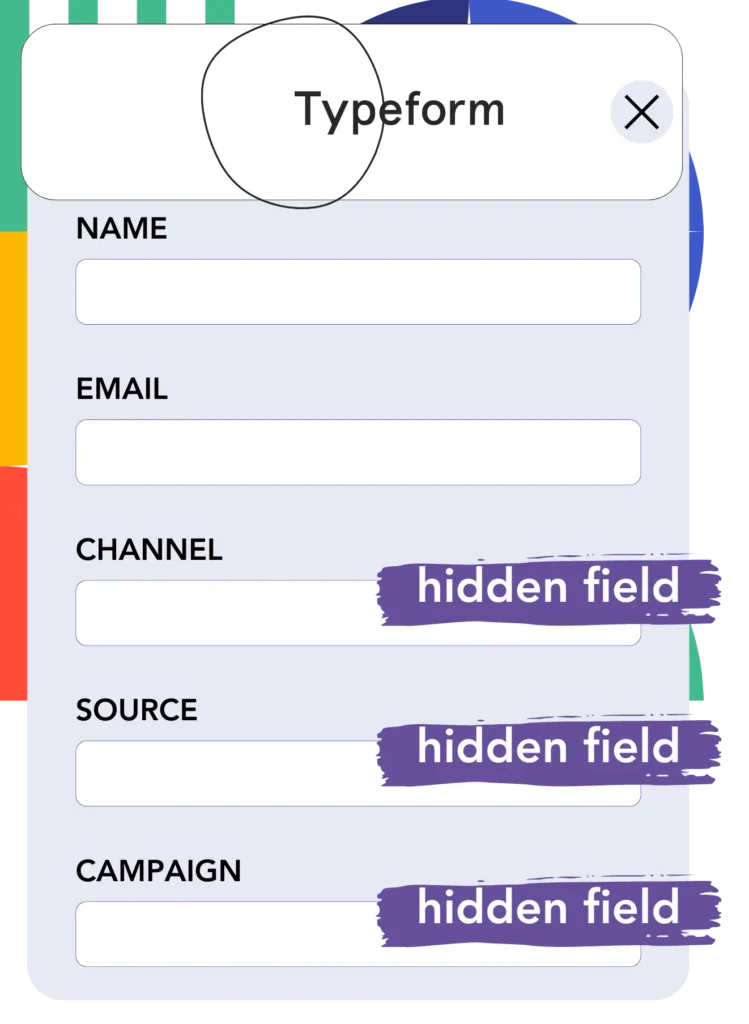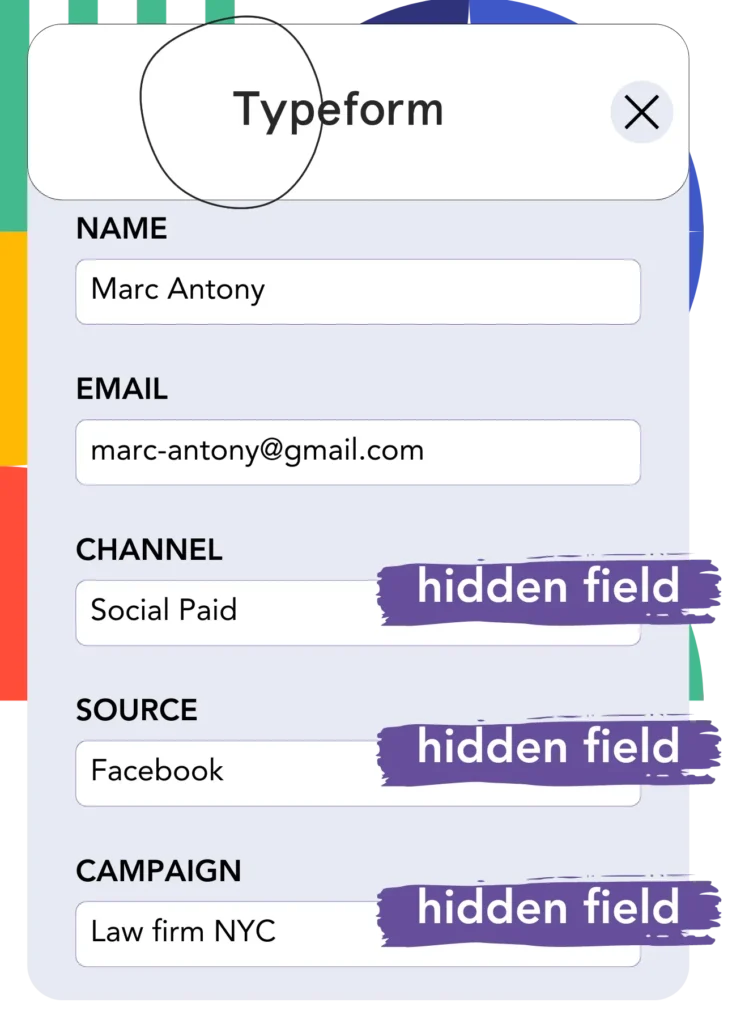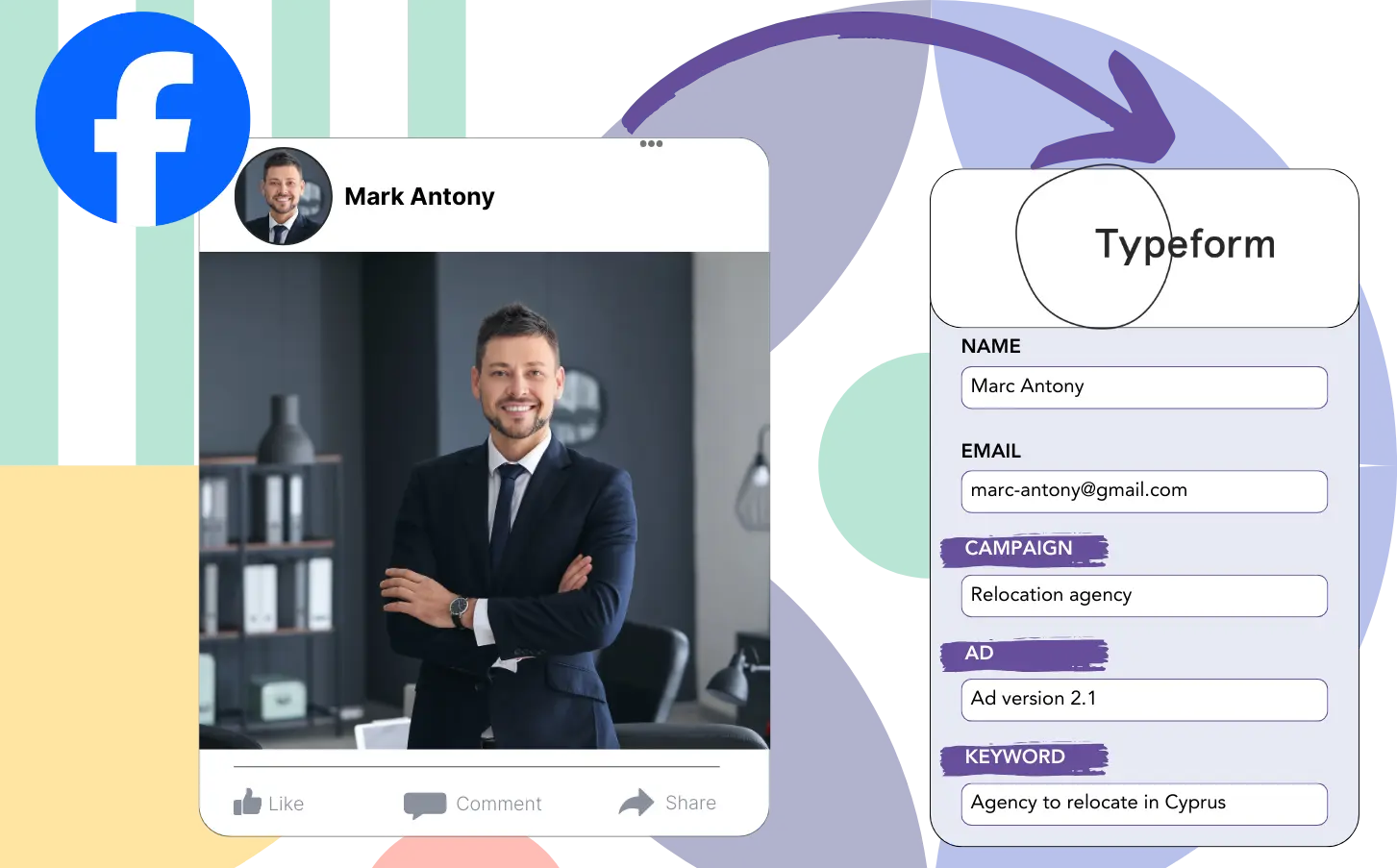Do you struggle to identify which Facebook ads are contributing to your leads, sales, and revenue generation?
It’s likely that you know how many leads come from your Facebook ads overall, but determining the source of each individual lead might still be unknown.
The inability to track which ads lead to customer conversions can result in wasted resources and missed opportunities.
Leadsources solves this challenge.
Leadsources records how each campaign (campaign, Ad Set, audience, ad) performs.
Using Typeform, you can retain comprehensive Facebook ads data, such as campaign, Ad Set, audience, and ad information for each individual lead.
Reports such as “Most effective lead-generating audiences” enable you to determine which audiences to promote or discontinue.
Let’s break this down!
Capture Facebook ads in Typeform
Step 1: Add Leadsources in the head tag of your website

Sign up to Leadsources.io, and benefit from our 14-day free trial.
Include the Leadsources tracking code in the head section of your web pages.
Simply follow this easy step-by-step guide.
Step 2: Add the UTM parameters to your Facebook ads campaigns

Ensure the UTM parameters are inserted into your Facebook ad campaigns (campaign, ad set, audience, ad).
Example: Place these UTM parameters in the URLs of your Facebook ads:
- UTM_source
- UTM_campaign
- UTM_term
- UTM_content
Leadsources captures all necessary lead source data, including channel, landing page, and landing page subfolder, even when UTM parameters are absent, providing complete insight at the lead level.
Step 3: Add the hidden fields in Typeform

When the Typeform is filled out and submitted, Leadsources automatically adds Facebook ads data, including campaign, ad set, audience, and ad, to the hidden fields.
Refer to our detailed guide to correctly add hidden fields in Typeform and complete the setup.
Facebook ads information is directly added to your Typeform by Leadsources (see Step 4).
Step 4: Capture the Facebook ads data in Typeform

Facebook ads details such as campaign, ad set, audience, and ad are collected by Leadsources when a visitor clicks on the ad and lands on your website.
Your Typeform form’s hidden fields are automatically populated with Facebook ads data by Leadsources.
Upon form submission, the Facebook ads data and the responses are uploaded to the Typeform submissions page for each lead.
How does Leadsources work?
When you add the Leadsources tracking code to the head tag of your site, it gathers Facebook ads data, including campaign, ad set, audience, and ad, every time a visitor reaches your site.
Once captured, the Facebook ads data is stored in the hidden fields of your Typeform.
Leadsources collects the following information from visitors:
- Channel
- Source
- Campaign
- Content
- Term
- Landing page
- Landing page subfolder
This allows you to follow key lead source details even if UTM parameters are not present, such as when traffic originates from organic sources like:
- Google Search
- Instagram bio link
- Social media posts
- Etc.
While many tools rely on UTM parameters for lead data capture, Leadsources continues to track leads effectively without them.
Unlike other tools, Leadsources provides lead data tracking across all channels:
- Organic Search
- Paid Search
- Organic Social
- Paid Social
- Referral
- Affiliate
- Display Advertising
- Direct Traffic
With this method, all lead source data is brought together into a central place for easier tracking.
Pro tip:
Track Facebook Ads data in all the popular online form builders, including Cognito Forms, Gravity Forms, Jotform, WPForms, and more. For all other form builders, refer to our guide on How to track Facebook Ads data in your online form.
How to run performance reports
Now that Typeform has your Facebook ads data, you can create various performance reports, such as:
- Leads per campaign
- Leads per Ad set
- Leads per audience
- Leads per ad
- Etc.
This helps you evaluate and adjust your Facebook ads budget more accurately.
Let’s go through the different types of reports you can make.
Lead performance reports
Reports help show the volume of leads produced by:
- Channel
- Campaign
- Ad set
- Audience
- Ad
- Landing page
- Landing page subfolder
Example #1
To create a report named “Leads by Channel,” export data from campaigns in SEO, PPC, and email.

Example #2
After establishing which channel is performing best, like Facebook ads, you can focus on it to view the number of leads from every campaign.

Example #3
When you determine the top lead-generating campaign, you can see which particular audience, ad set, or ad is responsible for these leads.

Sales performance report
While finding the ads and audiences with the highest lead generation is useful, do they also affect revenue positively?
Importing Typeform data into a CRM like GoHighLevel allows you to build detailed sales reports.
Example:
| Channels | Search Paid | Social Paid |
| Leads | 50 | 75 |
| Sales | 5 | 6 |
| Average order value | $150 | $100 |
| Revenue | $750 | $600 |
The review of Google and Facebook ads showed that Social Paid ads were more successful in generating leads compared to Search Paid ads.
The analysis over several weeks indicated that the Search Paid channel provided higher revenue with fewer leads compared to Social Paid.
LeadSources tracks the source of each lead on Typeform, whether they come from ads, organic search, social, email, etc. and syncs that data with each submission. See the full breakdown on the lead source in Typeform page.

